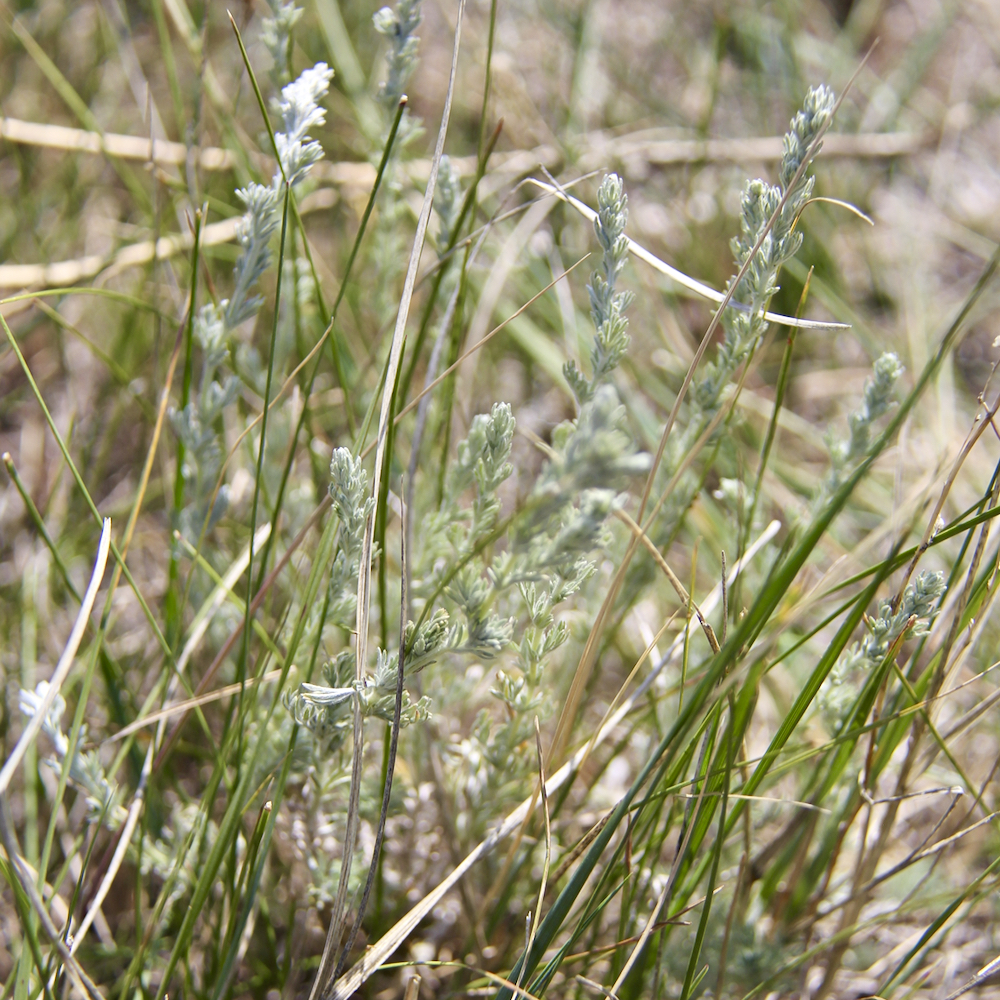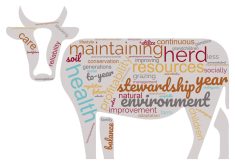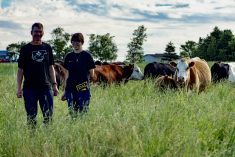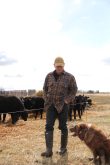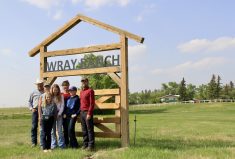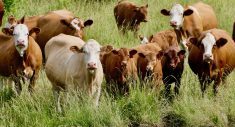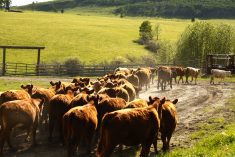Does the push to link environmental sustainability to commerce present opportunities or risks to Canada’s beef producers? The answer, it seems, is: it depends.
On the one hand, there is a grassroots movement to reward producers who are voluntarily providing ecosystem services. Ecosystem services include a variety of things: provisioning services (for example, flow of biomass), regulating services (for example sequestration), and cultural services (for example, tourism and education). An ecosystem services market offers incentives and payments for people who are taking care of the land, such as livestock producers.
However, the environmental services market is a relatively new venture in the industry, and that comes with a variety of limitations. One of these is a lack of understanding of the market. A panel hosted by the Western Stock Growers Association during the Alberta Beef Industry Conference earlier this year illustrates that.
Read Also
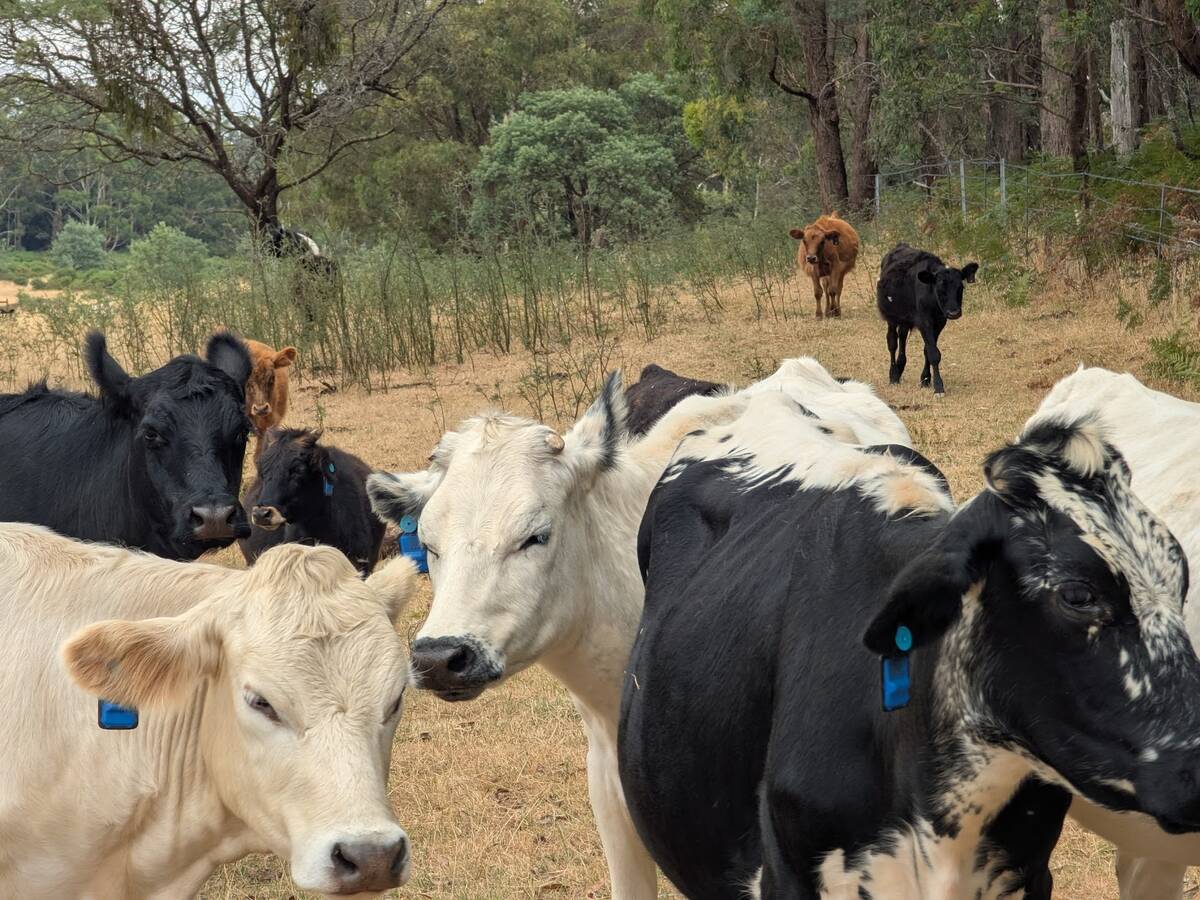
Australian company brings ear-tag tech to Canadian pastures
With Smart Paddock, beef farmers and ranchers can track their cattle through GPS technology
“There’s a lack of certification and standardization, there is a lack of overall understanding of what a market would be because it’s not like buying a shirt from a store,” says Lindsye Murfin, the Western Stock Growers Association’s general manager. “You’re buying more intangibles, you’re buying biodiversity, you’re buying water infiltration, water purification and water storage … it’s not like you’re carrying something away with you. So there’s a lot of uncertainty around that.”
ALUS is a charitable organization that supports farmers and ranchers in building nature-based solutions on agricultural lands. This includes wetland restoration and enhancements, shelterbelts and restoring native prairie grass.
Bryan Gilvesy, CEO of ALUS, is also a beef producer in Ontario and was part of the panel at the Alberta Beef Industry Conference last winter. ALUS is already active in the voluntary market through its corporate environmental services program, the New Acre Project. Corporations looking to fulfil environmental reporting requirements invest in nature-based projects implemented by ALUS farmers and ranchers.
Gilvesy says people often hear about carbon in the agricultural industry and how producers — mainly grain producers — can receive credits for carbon. But Gilvesy says an environmental services market isn’t just about carbon.
“It’s important to recognize that when a farmer or rancher does something on their land for the benefit of nature, that also has the benefit of sequestering carbon,” Gilvesy says. “There are a whole suite of other benefits like water filtration, biodiversity, species at risk, habitats, community resilience to go with it.”
Range and Township
Range and Township is a startup run by Riley Ohler that is looking for ways to get ranchers paid for the ecosystems services they provide.
“We are in the beginning phases of building a product, trying to better understand the market and just really trying to dig into something I’m really passionate about,” says Ohler.
Ohler grew up on a ranch in Alberta, surrounded by wide-open skies and grasslands. That background propelled him to start a business focused on environmental services on ranches. He thinks an environmental services market is a good way to help the industry with its appearance to the consumer.
“It’s an industry that has its ups and downs,” Ohler says. “And if we can level out some of those ups and downs and give the ag industry a much better name for themselves that more reflects their true selves and what they actually bring to the world, that’s really important to me. But then there’s also the environmental aspects of things and working in an urban area in Calgary here; it’s really important for me to make a difference environmentally.”
Ohler spoke at the Alberta Beef Industry Conference on the panel about the use of a “design horizon model,” which is a growth strategy framework. Ohler says there are three different horizons: small business decisions, finding a new revenue stream and finding new customers and a new product. Ohler thinks the ecosystems market is in this third stream.
“We’re creating both the product and the customer, and that can be a real challenge, and that takes time and market saturation as folks start building out these businesses.”
One of the main things Ohler does in this market is work to get investors involved. He also works on education, saying he believes the education portion of the ecosystem services market is just as important as producers receiving compensation for the work they do in the environment.
“I think that’s what excites me is that it starts bridging that urban and rural divide,” he says.
Western Stock Growers Association
Lindsye Murfin is heavily involved in the environmental services market, with the Western Stock Growers Association conducting multiple pilot programs.
The organization’s first pilot started in 2020, although they’ve been in the conversation regarding environmental goods and services for 20 years. This pilot was in partnership with EcoServices Network, with funding from Alberta Innovates through Alberta Biodiversity Monitoring Institute and was intended to see where the sticking points were in the market framework. From there, they developed the Grasslands Capital X (GCX) index. Murfin explains that the index is a way to identify and calculate a weighted combination of ecosystem services benefits in a standardized way, since ecosystem services are often hard to measure.
The first pilot ended in 2022, but the association immediately launched another pilot program, which also focused on the GCX index. For the second pilot, WSGA is looking at trying to insert the GCX index in the carbon plus market.
“With funding from RDAR (Results Driven Agriculture Research) and the sign-on of some great ranchers, we are attempting to test the carbon plus market on 40,000 acres of land,” Murfin says.
“Our second pilot is not yet complete but there have been some key learnings and identification of large obstacles in pushing this through to get actual market transactions.”
Ohler, Murfin, and Gilvesy will continue improving and advocating for the market.
For Range and Township, Ohler plans to help the market grow and thrive.
“We’ve already seen some amazing advancements in this area,” Ohler says. “But I wouldn’t be surprised if in the next three years, we’re going to see a group of farmers or ranchers who are able to receive this funding and in 10 years, it will become a practice, I feel.”
Murfin hopes environmental markets can help the environment without burdening producers.
“I’m hoping that it will be incentivizing the production of ecosystem service through true markets that addresses economic and environmental concerns,” Murfin says. “It helps us meet climate targets with very little interruption, overreach, and cost on the part of the government. I’m really hoping that’s where we get. The opportunity is there, but it’s proving to be very hard.”
At ALUS, Gilvesy says he hopes to see benefits reach farmers who are nurturing important ecosystems.
“I think in the future, we’ll come to the recognition that farmers and ranchers are one of the greatest resources that Canadians have to solve their environmental issues. I think that’s where we wind up,” Gilvesy says.
Sustainability accounting standards
However, producers are also concerned about recent moves to tie environmental sustainability to financing.
At the Saskatchewan Stock Growers’ annual general meeting on June 5 and 6, both association members and producers in attendance expressed concern about sustainability accounting standards.
The main concerns for Prairie producers are mandatory Scope 3 emissions, water stress areas and the cost of compliance, says Tammy Nemeth, a strategic energy, governance and environmental analyst in the U.K. Nemeth presented at the Saskatchewan Stock Growers Association’s AGM.
Water stress areas refers to the World Resources Institute Water Risk Atlas tool — Aqueduct — which deems much of the Prairies as water stress areas. Nemeth says this could cause producers in high-stress areas to be highly monitored when it comes to their operation and water usage.
Mandatory Scope 3 emissions would place responsibility for both direct and indirect emissions related to a product on the producer. For beef, that would include livestock, equipment, buildings, transportation, processing, storage, as well as how the consumer preps and eats the product.
“The target is the western companies that have been working really hard to clean up their act, to have the least amount of damage possible,” Nemeth says. “There’s going to be effects no matter what we do … but there’s the companies that have done their best to minimize that damage, and other companies that may operate with less ethical ways will be unaffected by this.”
Nemeth suspects banks will eventually be looking at a producer’s emissions rather than their credit rating.
Farm Credit Canada (FCC) wrote via email that they are expected to report Scope 3 emissions.
“The Canadian Accounting Standards Board requires organizations like FCC to use International Financial Reporting Standards in the preparation of all interim and annual financial statements. FCC follows this accounting standard and as the IFRS merges the new International Sustainability Standards Board, FCC will be subject to these new standards,” states FCC.
“As the industry leads the way with sustainability-focused initiatives and programs, FCC is here to partner where we see opportunities for industry and customer-driven success. As a Crown corporation and the only lender solely dedicated to agriculture and food, FCC is in a unique position to meet producers where they are at and support decisions that balance the need for a stable and profitable future with a continued focus on sustainability throughout the food value chain.”
Nemeth expects the regulations to be implemented in fiscal 2024 or 2025.
Many producer groups, including the Saskatchewan Stock Growers Association, wrote to the International Sustainability Standards Board when it released the new standards two years ago. Following presentations at the conference, the stock growers voted to lobby all levels of government against social credit tools. The association also released a letter from Garner Deobald, association president, addressed to Minister Bibeau. The letter highlights concerns with the mandatory sustainability disclosure standards that will be coming through the newly created Canadian Sustainability Standards Board and asks for a public consultation.
“It appears that these standards have been hastily put together with little consideration given to the burdens they will create for Canadian small- and medium-sized businesses and the particular circumstances unique to Canadian livestock producers,” Deobald writes.


